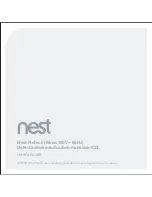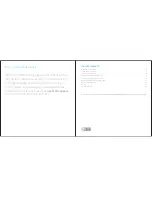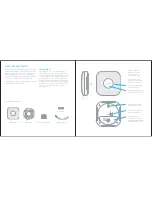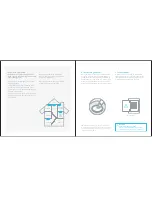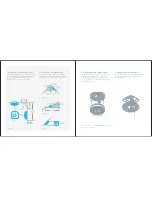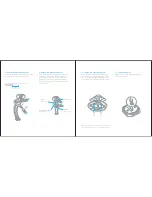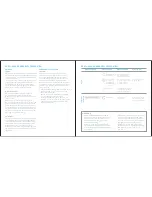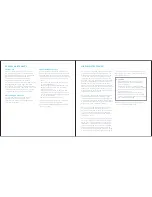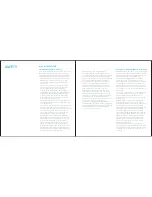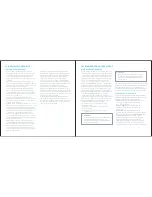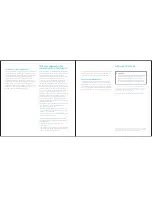
25
24
ALARM LIMITATIONS
LIMITATIONS OF SMOKE ALARMS
Alarms reduce deaths resulting from home fires
worldwide. However smoke alarms can only
work if they are properly located, installed and
maintained, and if smoke reaches the alarms.
• Smoke alarms may not waken all individuals.
Make sure you create an escape plan and
you practice fire drills with all members of
the family.
• Smoke alarms cannot work without power.
If they are powered by batteries, the smoke
alarms cannot work if the batteries are
missing, dead or disconnected. If they are
wired, the smoke alarms cannot work during
a long power outage and once the backup
battery is dead. Nest Protect will warn you
in advance when batteries are running low
so that you can replace them.
• Smoke will not be able to reach smoke sensor
while the dust cover is in place. The dust cover
must be removed.
• Smoke alarms cannot detect fires if the smoke
does not reach the alarms. For example, if a
door is closed, smoke may not reach the smoke
alarm. This is why you should have a smoke
alarm in each bedroom and in the hallways as
bedroom doors may be closed at night.
• Smoke alarms may not be heard. Although
the smoke alarm comes with a loud horn of
85 decibels, it may not be heard if : 1) people
have consumed alcohol or drugs, 2) the
alarm is drowned by noise from stereo, TV,
traffic, air conditioner or other appliances,
3) residents are hearing impaired or have high
frequency hearing loss associated with aging.
Special smoke alarms should be installed for
those who are hearing impaired.
SAFETY
• This smoke alarm is not intended to
alert hearing impaired residents. Alarms
specifically designed for the hearing impaired,
which feature devices like flashing strobe
lights or low frequency devices are available to
alert the hearing impaired in case of fire.
• This smoke alarm alone is not a suitable
substitute for complete fire detection
systems in places housing many people—
like apartment buildings, condominiums,
hotels, motels, dormitories, hospitals,
long-term health care facilities, nursing
homes, day care facilities, or group homes
of any kind—even if they were once single-
family homes. It is not a suitable substitute
for complete fire detection systems in
warehouses, industrial facilities, commercial
buildings, and special-purpose non-
residential buildings which require special
fire detection and alarm systems. Depending
on the building codes in your area, this smoke
alarm may be used to provide additional
protection in these facilities.
LIMITATIONS OF CARBON MONOXIDE (CO) ALARMS
• NEVER ignore your carbon monoxide alarm if it
alarms. Refer to “What to do in case of a carbon
monoxide alarm” for more information. Failure
to do so can result in injury or death.
• This CO alarm is designed for use inside a
single-family home or apartment. It is not
meant to be used in common lobbies, hallways,
or basements of multi-family buildings unless
working CO alarms are also installed in each
family living unit. CO alarms in common areas
may not be heard from inside individual family
living units.
• This CO alarm alone is not a suitable substitute
for complete detection systems in places
which house many people, like hotels or
dormitories, unless a CO alarm is also placed
in each unit.
• DO NOT use this CO alarm in warehouses,
industrial or commercial buildings, special
purpose non-residential buildings, or airplanes.
This CO alarm is specifically designed for
residential use, and may not provide adequate
protection in non-residential applications.
• Some individuals are more sensitive to CO
than others, including people with cardiac or
respiratory problems, infants, unborn babies,
pregnant mothers, or elderly people can be
more quickly and severely affected by CO.
Members of sensitive populations should
consult their doctors for advice on taking
additional precautions.
• The silence feature is for your convenience
only and will not correct a CO problem. Always
check your home for a potential problem after
any alarm. Failure to do so can result in injury
or death.

